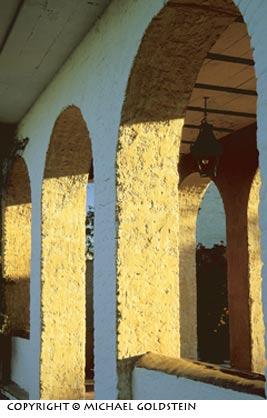
The early morning sun, peeking over the hill behind the city, briefly lights up these arches in one of the buildings on the grounds of the hotel Posada de la Aldea. It’s necessary to view the building from the side in order to see this effect, and it only lasts for a short time, before the angle of the sun changes. It emphasizes the rule about looking all ‘round your subject, from below and above and side – to – side. Of the thirteen photographers in my group, wandering the hotel grounds just after dawn, only I saw this image.
“You have to use your wide-angle lenses to make “people pictures” that have impact!” For thirteen avid photographers, using wide-angle lenses comes as a new idea. We’re accustomed to using our longest lenses, generally while we’re hiding behind power poles or woodpiles.
I’ve come to San Miguel de Allende, in central Mexico, together with twelve fellow apostles, to indulge in a six-day bacchanalia of intensive photography workshop. Our focus is travel, and our goal is to learn to make photographs of a place that illustrates what it’s like to be there. Our group ranges in experience from the neophyte to the obsessed, and we’re split down the middle by both gender and choice of recording medium. The digital photographers have brought their laptop computers, extra memory cards, spare batteries, and miles of cable. I’ve brought thirty rolls of Fuji Velvia.
As is usual for me, with two decades of photographic history behind me, I’m hoping to come away with at least one new idea, either technical or tactical, to improve my imagery. A new tactical idea is about to drop into my lap.
“You have to enter into a relationship with your photographic subjects that goes far beyond asking if you can photograph them.” The idea here is that we must engage our subjects’ interest in the process and get them to invest in it and in us. Our most useful tools are a smile and the willingness to expose ourselves to rejection. Each “people picture” should represent a new friendship, however brief.
We’re sitting in a semi-circle in a hotel conference room, listening to MacDuff Everton, world-class pro travel photographer with a list of magazine credits as long as his lanky frame, as he warms to the theme he will promote for the coming week. In his recent book, Spirit of Place, Bob Krist says of a list of photographers that includes Everton, “…I am literally blown away at what these photographers saw that I didn’t,,,” Strong praise, indeed, as Krist’s work has motivated my own photographic efforts for years.
The center of operations for the San Miguel workshop is the hotel Posada de la Aldea. It’s a comfortable, attractive establishment only a fifteen-minute walk from the historic part of the city. It boasts extensive grounds, its own restaurant, and a large swimming pool. We don’t take long to discover that in magic-hour lighting, wonderful things happen around the hotel compound. I’ll spend plenty of pre-breakfast time exploring my surroundings using various lenses.
Taxis are plentiful in San Miguel and very inexpensive. It’s quite a practical idea to load camera bag and tripod into a cab and ask the taxista to show you the most attractive parts of his city. Each time you do this, you’ll find new areas to photograph. Of course, you’ll find most of your best photos by simply walking in San Miguel, exploring its narrow lanes, parks, plazas, and markets. In a week of shooting, we didn’t find a single people picture while driving in a car.
|
The building which houses the ZAC50 Gallery on Zacateros Street (#50, of course!) is a wonderful subject for photography, with a series of arches perfect for framing compositions. Trying out MacDuff Everton’s ideas on making people photographs, I popped into this gallery one evening after dinner, to check it out. I first examined the art on the walls, then began discussing the building itself, with the gallery attendants, while struggling with my Spanish, and theirs. Not a lot of English spoken here. Eventually, I introduced myself as a photographer, mentioned I was taking the SF workshop in the hotel up the street, and indicated I’d like to return later, to photograph in their gallery. By the time I left, we were all good friends, and they were correcting my Spanish grammar. Photographing here cries out for the use of wide – angle lenses, and I was even able to use my 15mm fish – eye to good effect. I posed Laura Reyes, one of the gallery owners, in a number of compositions, after first having her, and her assistants, look through the lens, and offer compositional suggestions. I bounced flash from the white ceiling, blending it with the ambient light. Speaking of having your subject “invest in the image” … I only escaped when I ran out of film, and the girls had explored every compositional variation of which they could conceive! |
San Miguel is one of those lovely Spanish colonial small cities common throughout México. To promote this impression, the city fathers have decreed that there will be no traffic lights. The resulting traffic, largely old-style VW Beetles and green taxis, is both heavy and chaotic but slow, due to the rough streets. However, crossing any road requires only a smile and a pointing finger during a break between vehicles–and a wary eye for the occasional exuberant motorbike.
The photographic light here, at any time of day, is exquisite. The streets of this cobble-stoned city are lined with buildings in a variety of pastel colors that positively glow when sunlight bounces back and forth. The city sits at an elevation of about 2350 meters, and there is no heavy industry. In November, t-shirts and shorts are comfortable attire throughout the day, with slacks and a light sweater for the evening. There is no appreciable humidity, and stepping out of the sunshine into shadow has an immediate cooling effect. Small wonder that San Miguel has a large Anglo retirement community!
No expedition runs without refueling. For meals, San Miguel offers a wide choice of culinary delights and strong beverages. The best bargain is Mexican beer, only a couple of dollars a bottle, served with slices of limón, or green lime. They even have a dark ale, called Negro Modelo, which is excellent.
Just across the street from the hotel is the L’Invito, an Italian restaurant with an excellent patio view of the setting sun as it illumines the historic district of the city. Here, Sylvia Bernadini will create her version of risotto for you, complete with homemade pasta, clams, and squid.
On Zacateros Street, the Casa Payo claims to be an Argentinian steak house (the best in San Miguel), but in fact, serves Mexican beef, some of the most tender I’ve ever enjoyed. Their steaks come in a variety of sizes, together with garlic bread, grilled onions, and an excellent garlic butter, if requested.
In Finnegan’s Bar and Restaurant, Fernando Padilla asked me to try their new fish dish, grilled in butter, diced ginger, lemon, Tabasco sauce, soy, and black pepper. Finnegan’s offers live music in the evening, and when the band finishes a set, the band members pick up their glasses and toast their patrons with “Salud!”
During our workshop week, MacDuff provides insights into magazine requirements for images, stock photography, film speeds, digital techniques, and his unique travel experiences, which are legend. On several field trips, he demonstrates the effectiveness of his ideas about making people pictures. His own photography is breathtaking, his skills as a teacher impressive. Each of us leaves San Miguel de Allende with new insights into, and appreciation for, this art that fascinates us.
by Michael Goldstein

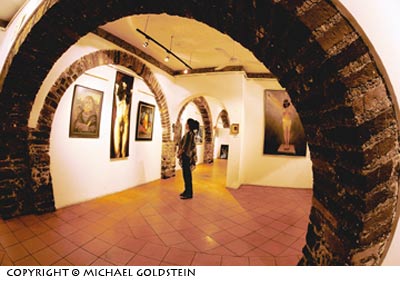
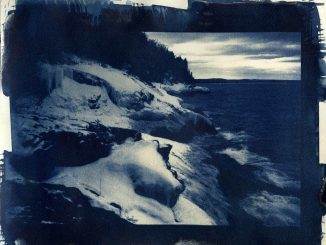
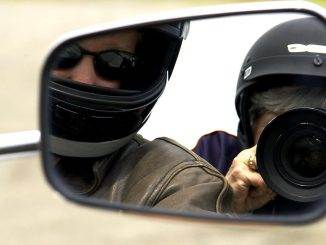
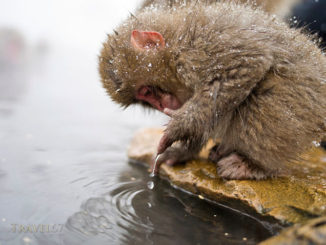
Leave a Reply